
‘Afraid of the water’? Life in a city that dumps billions of litres of raw sewage into lakes and rivers
10 billion litres of sewage are dumped into Winnipeg’s lakes and rivers each year. Some...
Fisheries and Oceans Canada Minister Joyce Murray says her goal over the coming year is to develop a plan for salmon farming that both protects wild salmon and provides opportunities for a sustainable aquaculture industry in B.C.
Murray’s comments to The Narwhal come the day after she announced a two-year extension for dozens of salmon farm licences on B.C.’s coast that were set to expire at the end of June.
The primary aim, Murray said, is to protect wild salmon, which means the industry, moving forward, will “need to greatly reduce or eliminate the interaction between wild salmon and the fish farm salmon,” she said in an interview Thursday.
While most salmon farm licences were renewed, the industry will still not be allowed to operate in the Discovery Islands region, off the northeast coast of Vancouver Island, which is a part of a key migratory route for wild salmon.
The two-year extension for farms in other areas will give the government time to consult with First Nations, environmental groups, communities and industry to transition away from open-net pen systems, which create the potential for pathogens and parasites to spread to wild fish.
While Timothy Kennedy, the chief executive officer of the Canadian Aquaculture Industry Alliance, said the typical six-year licence renewal would have better reflected the industry’s production cycle, Murray said the limited two-year extension reflects the urgent concerns about the risks to wild salmon.
“This is essentially a crisis with the wild Pacific salmon,” she said.
Though salmon farm licences have been renewed for a limited time, the news that the federal government is moving forward with the development of a plan to transition farms out of the water was welcomed by long-time opponents of the industry.
“I’m really happy to see that the department of Fisheries and Oceans is actually beginning to take meaningful steps to implement the transition,” said Bob (Galagame’) Chamberlin, the chair of the First Nation Wild Salmon Alliance.
“Of course, I wish that this was happening quicker than it is,” he said.
Chamberlin added that it’s significant that First Nations on the coast, as well as in the interior, will be able to provide input on the transition plan. He said First Nations along the Fraser River haven’t been consulted on the salmon farming industry previously, despite their reliance on wild salmon that travel past farms on their migrations.
“They’re going to be able to actually speak to the protection of their Aboriginal rights, their culture, traditions and food security,” he said.
In a joint statement, biologist Alex Morton and the environmental organizations Watershed Watch and Clayoquot Action also expressed some optimism in response to the decision, but warned there will continue to be risks to wild salmon as long as fish farms are allowed to operate in the ocean.
“By not renewing the Discovery Island licences and limiting all other salmon farm licences to two years, government has signalled that open-net salmon farming in B.C. is coming to an end,” the organization said in a news release Wednesday.
In a separate statement, Kilian Stehfest, a marine conservation specialist with the David Suzuki Foundation, said “we’re particularly relieved that the minister has recognized the extraordinarily high risk farms pose in the Discovery Islands.”
“However, the two-year renewals for licences must be the last time Canada extends the timeline on Atlantic salmon farms. It gives industry plenty of time to complete their existing production cycle,” Stehfest said.
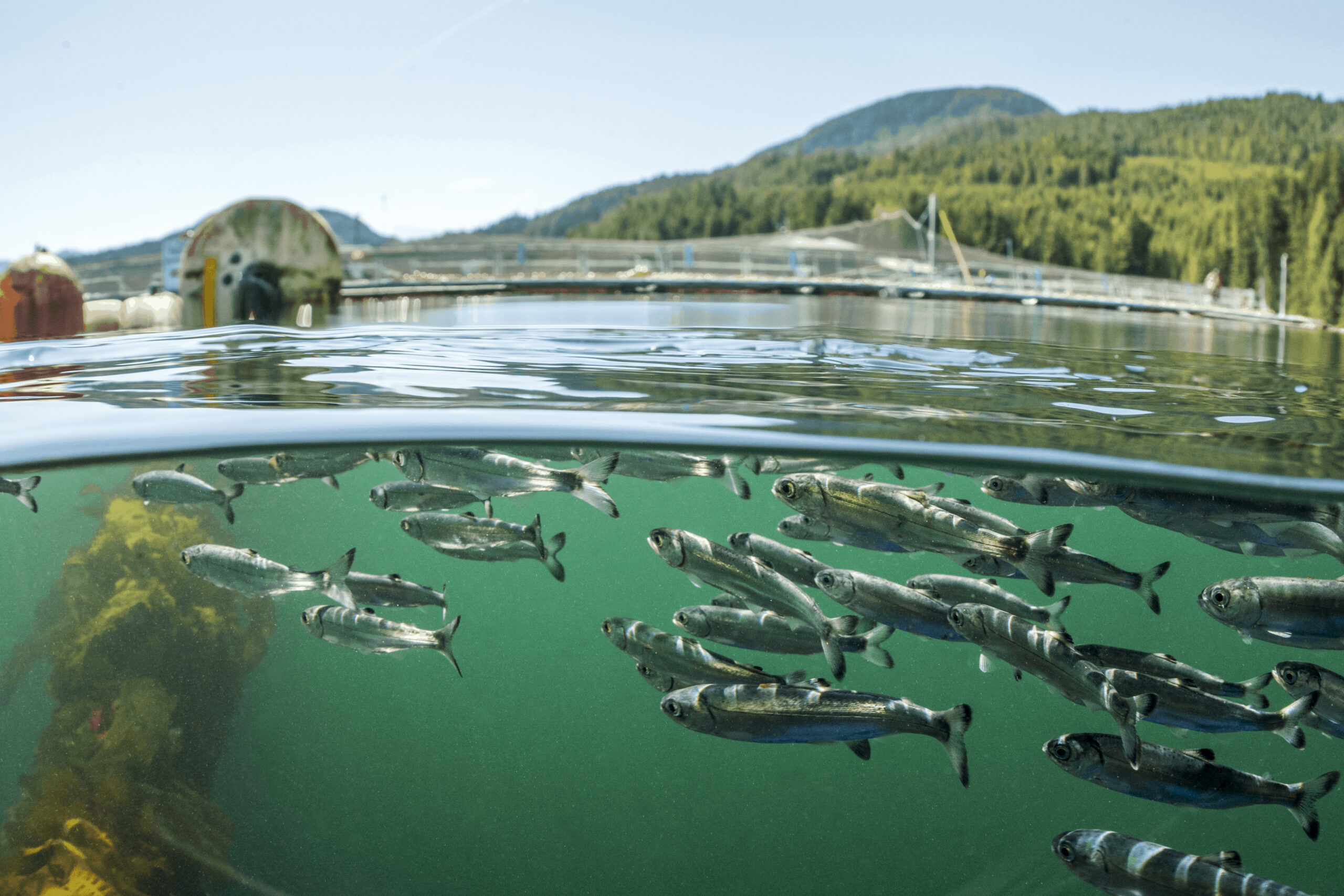
Former fisheries and oceans minister Bernadette Jordan announced a plan to phase out salmon farming from the Discovery Islands 18 months ago. The move was quickly challenged in court by four companies. Earlier this year the Federal Court ruled Jordan had breached the companies’ right to procedural fairness, essentially putting the decision in the hands of her successor.
Now, alongside work to develop the broader transition plan, Fisheries and Oceans Canada said they will also undertake consultations with First Nations and salmon farmers about the industry’s future in the Discovery Islands specifically. A final decision is expected in January.
Salmon farming is big business in B.C. In 2020, $566 million worth of farmed Atlantic salmon was exported from B.C., making it the province’s top agriculture, seafood, food and beverage export that year.
At the same time, the industry supports the equivalent of almost 6,500 full-time jobs through direct employment at farms, indirect employment at businesses that supply goods and services for the farms, and induced employment from the income employees spend, according to the BC Salmon Farmers Association.
In response to Wednesday’s announcement, the industry association that represents salmon farmers in B.C., said the industry poses minimal risk to wild salmon, but expressed support for the path forward outlined by the government.
In a news release, Ruth Salmon, the interim executive director for the BC Salmon Farmers Association, said the announcement will ensure there’s time for the industry to work with First Nations and the federal and provincial governments towards a future that supports coastal communities, meets global demand for seafood, and protects wild salmon.
Fisheries and Oceans Canada said it expects the final transition plan to be released in the spring of 2023.
In the meantime, renewed salmon farm licences will be subject to stronger rules, including sea lice management plans and monitoring of wild salmon, the department said.
Here’s what you need to know to understand this decision:
Salmon farms are an added burden for wild salmon, already threatened by everything from habitat destruction to pollution to climate change.
A 2019 report on the state of Pacific salmon in Canada found that northern salmon populations, those that enter rivers north of Vancouver Island, are faring generally better than southern populations. But some species, such as Chinook, are declining throughout B.C. and Yukon. Many populations of sockeye and coho salmon are also declining in their southern ranges.
The effects of declining salmon abundance ripples throughout ecosystems. Salmon are food for bears, eagles, sea wolves, endangered southern resident killer whales and even the forests that surround the streams where they spawn.
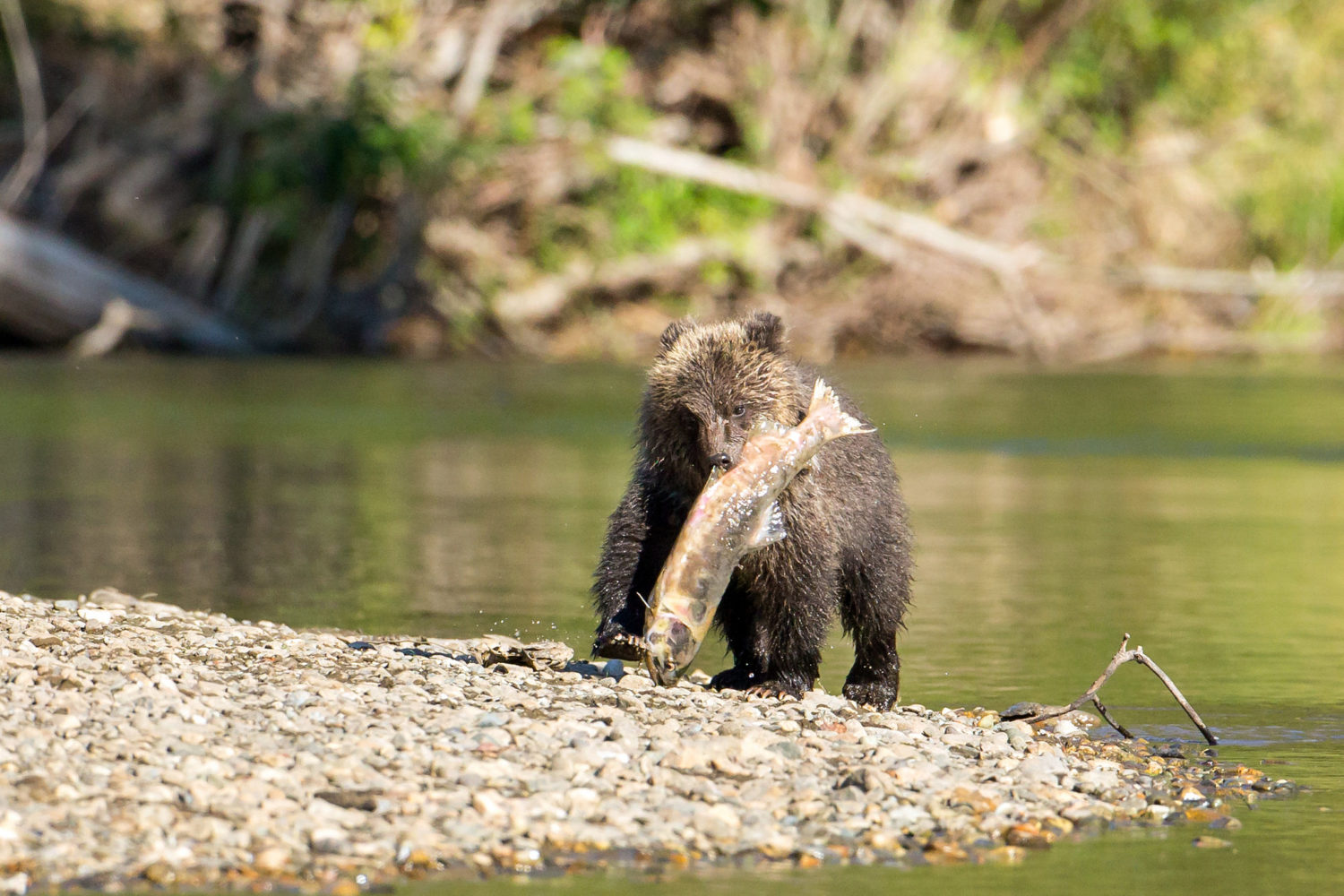
For many First Nations, salmon are culturally significant as well as an important food source.
During a session on wild salmon at the Union of British Columbia Indian Chiefs council meeting in early June, Shackan Indian Band Chief Arnie Lampreau (Swakum) spoke of the significant decline in salmon in his territory.
“My uncles and my grandfather and family, we thrived on fish,” he said. “We never had to go anywhere for fish, there was so much fish in the Nicola Valley at one time, that there’s pictures of my field full of drying racks, in the community of Shackan.”
Salmon were used for food and ceremony and trade. “It was part of everything that we did within our whole lifecycle,” he said.
Today, the salmon populations have dropped to the point where Shackan had to buy fish to feed their communities, Lampreau said.
“We’ve never had to buy fish,” he said. “It was around $750,000 for fish just for our eight communities.”
In an interview earlier this month, Chamberlin, who is also the former chief councillor of Kwikwasut’inuxw Haxwa’mis First Nation, said he was grateful Lampreau spoke up in that meeting.
Industry always “puts a dollar value on the job loss,” Chamberlin said. Lampreau offered some insight into the dollar cost to a First Nation of not being able to exercise inherent and constitutionally protected rights to fish.
“And that’s just one First Nation on the Fraser,” Chamberlin said.
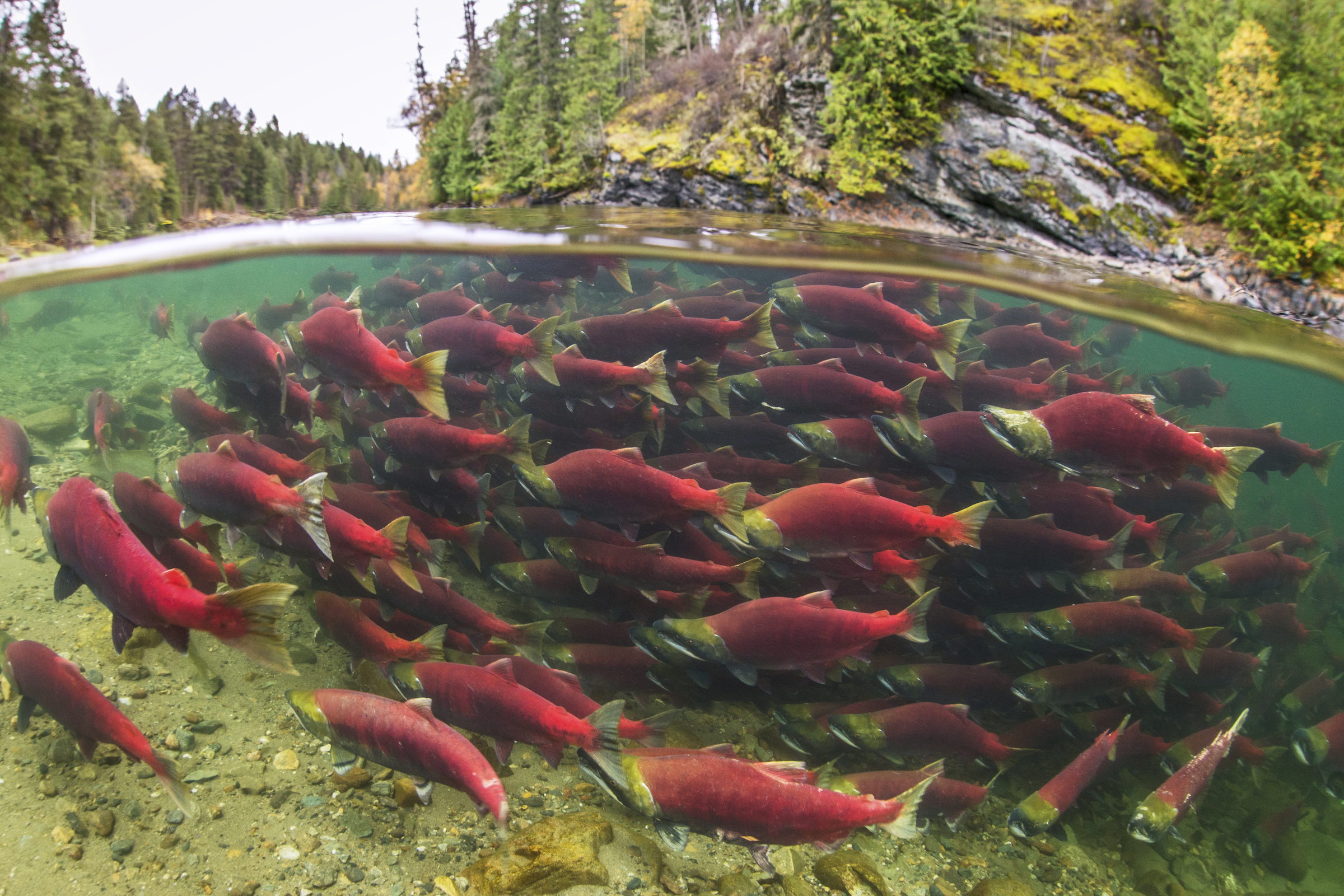
Though salmon farms are located in coastal waters, salmon split their lives between freshwater and saltwater. Salmon that return to rivers like the Fraser, migrate past salmon farms as juveniles and again as adults returning to spawn.
There are “sea lice and other diseases and viruses that the wild stocks pick up as they’re swimming through them waters,” Lampreau said in an interview. “They’re unhealthy waters now.”
Sea lice have “virtually vanished” from the Discovery Islands, said Alexandra Morton, a biologist and longtime opponent of ocean-based salmon farms.
For years, Morton, who is also a science advisor to ‘Na̲mg̲is First Nation, has been monitoring sea lice levels among young wild salmon travelling through the region during their out-migration into the ocean.
Sea lice are parasites that latch onto small juvenile fish, eating into their skin and making them more vulnerable to both infection and predation. While farmed salmon don’t have sea lice when they enter the ocean pens, they can be a breeding ground for the pests.
Of 370 juvenile pink and chum salmon Morton examined this spring, 88 per cent had zero lice. The average infection rate was 0.16 lice per fish, she said. It was a major change from the spring of 2020, when Morton said more than 95 per cent of the wild salmon she examined were affected and she was seeing an average of about seven lice per fish.
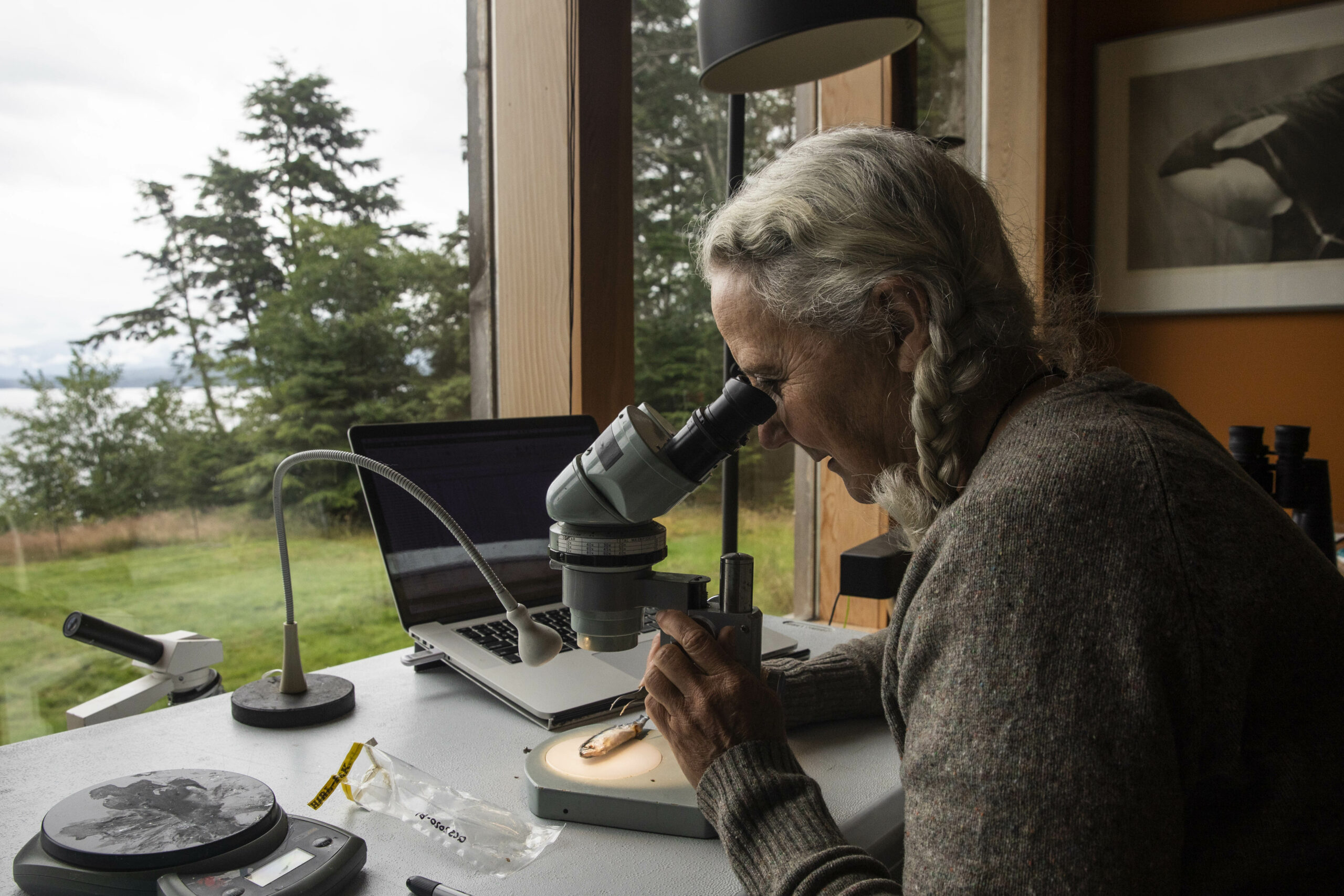
To see so few lice this year? “It’s really hard to explain that feeling,” she said. “It’s joy, hope.”
Researchers at the Hakai Institute, a scientific research institute, have also been monitoring sea lice in the region since 2015 and noticed a drop in 2022.
Brett Johnson, a biologist who leads the institute’s juvenile salmon program, cautioned that the finding isn’t “statistically significant” at this point. Basically, the team hasn’t been able to collect enough data to determine whether salmon farm closures have affected sea lice levels because of the low number of out-migrating sockeye salmon moving through the Discovery Islands this year, he said.
When asked for comment on Morton’s findings, Michelle Franze, the communications manager for the BC Salmon Farmers, pointed The Narwhal to a report the industry association published last year that refuted claims there had been any decrease in sea lice levels in the wake of salmon farm closures in the Discovery Islands.
Third party consultants have monitored sea lice on out-migrating wild salmon at 29 sites in the Discovery Islands region since 2017, capturing salmon before, during and after possible exposure to salmon farms, the report notes.
“During the five years that this monitoring program has been conducted, sea lice levels have remained low. There has been no trend of increase in sea lice levels in wild salmon after sea lice have migrated past salmon farms in the region,” it says.
While Johnson said the Hakai team hasn’t collected enough data to determine the effect of Jordan’s decision, he did note that “this notion that we see fewer sea lice on wild salmon when there’s fewer salmon farms, that’s well supported in the peer-reviewed scientific literature and that’s what we would expect to see.”
Salmon farms can also be hotbeds for viruses.
In the same way that COVID-19 spread easily among crowds of people, viruses can thrive on farms where a high density of fish are confined to net pens, according to Gideon Mordecai, a viral ecologist at the University of British Columbia.
Much of Mordecai’s work has focused on the piscine orthoreovirus, or PRV, which has been shown to cause disease in both Atlantic and Chinook salmon.
“It causes the blood cells of the Chinook salmon to rupture or explode, which leads to damage in the liver and kidney,” he explained.
Through his own research Mordecai found the virus is being transmitted from farms to wild salmon.
He not only detected the same variants of PRV in both farmed and wild salmon, he also found that wild Chinook salmon found close to farms are more likely to be infected with PRV.
A few years ago, Fisheries and Oceans Canada completed nine risk assessments of pathogens, including PRV, at salmon farms in the Discovery Islands and the risk they pose to Fraser River sockeye salmon.
“All of the assessments concluded that the pathogens on Atlantic salmon farms in the Discovery Islands area pose no more than a minimal risk to Fraser River sockeye salmon abundance and diversity under the current fish health management practices,” the department says on its website.
But the impact of sea lice was not assessed and the process overall has been heavily criticized as being too industry friendly.
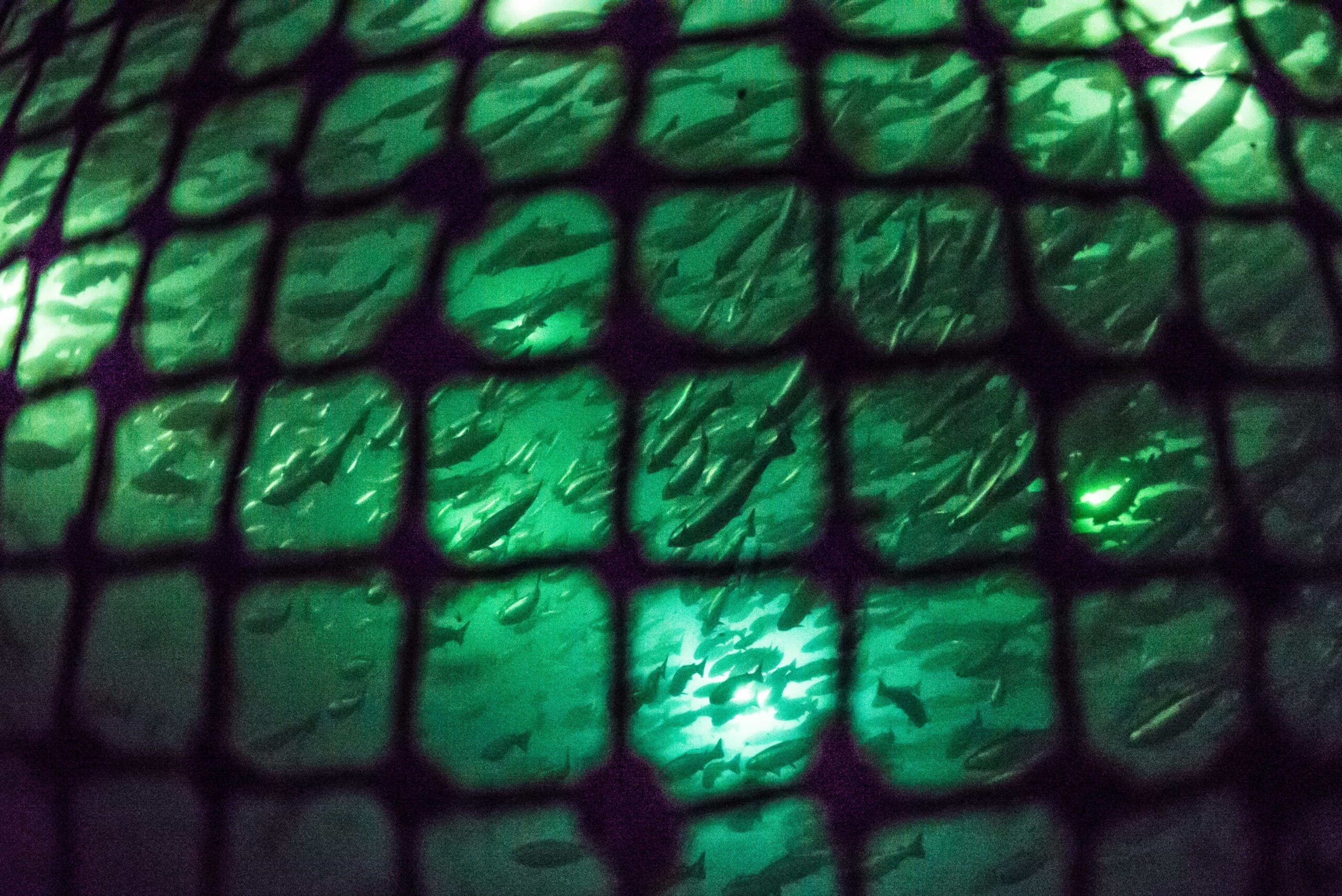
Since the end of April, the House of Commons Standing Committee on Fisheries and Oceans has been holding hearings into the state of science at the federal department. Several scientists who participated in the risk assessment process have appeared before the committee to raise concerns that the department had disregarded key research and minimized the risks to wild salmon, The Tyee has reported.
“There is no validity in First Nations that I speak to — and I speak to a lot of them — about those science papers,” said Chamberlin said earlier this month.
More than 100 First Nations support transitioning the salmon farming industry out of coastal waters, he said.
There is a “great body” of science that stands in contrast to Fisheries and Oceans Canada’s conclusion that fish farms pose minimal risk to Fraser River sockeye salmon, he said.
“This all just begged for the precautionary principle, which means no farms, erring on the side of wild salmon,” he said.
Fraser River salmon migrate through the Discovery Islands area, which means all First Nations along the Fraser River are affected, but they’re not being consulted, Chamberlin said.
For years, there have been concerns about the federal department’s dual mandate to both protect wild salmon and promote the aquaculture industry.
A decade ago, Bruce Cohen warned in his final report of the Cohen Commission of Inquiry into the Decline of Sockeye Salmon in the Fraser River, that as long as Fisheries and Oceans Canada “has a mandate to promote wild salmon farming, there is a risk that it will act in a manner that favours the interests of the salmon-farming industry over the health of wild fish stocks.”
In a statement, Claire Teichman, Murray’s press secretary, said the minister is “committed to transitioning away from open-net pen salmon farming in coastal British Columbia waters.”
“Work to do so is already underway; last spring, former parliamentary secretary Terry Beech concluded engagements on a plan to phase out open-net pen fish farms, which was published in July 2021,” she said.
“As always, continued and close collaboration with Indigenous communities, the Province of British Columbia, industry, scientists and other stakeholders will be key to developing a responsible plan and successful transition process,” the statement said.
In March, Premier John Horgan wrote to Prime Minister Justin Trudeau about concerns in coastal communities over the impact of a decision not to renew the dozens of salmon farm licences that were set to expire this month.
That would be a decision, Horgan warned, that would “eliminate hundreds of jobs” and “undermine the economies of dozens of communities,” the Canadian Press reported.
He urged the federal government to ensure support for workers and industry in any plan to transition the industry out of the water.
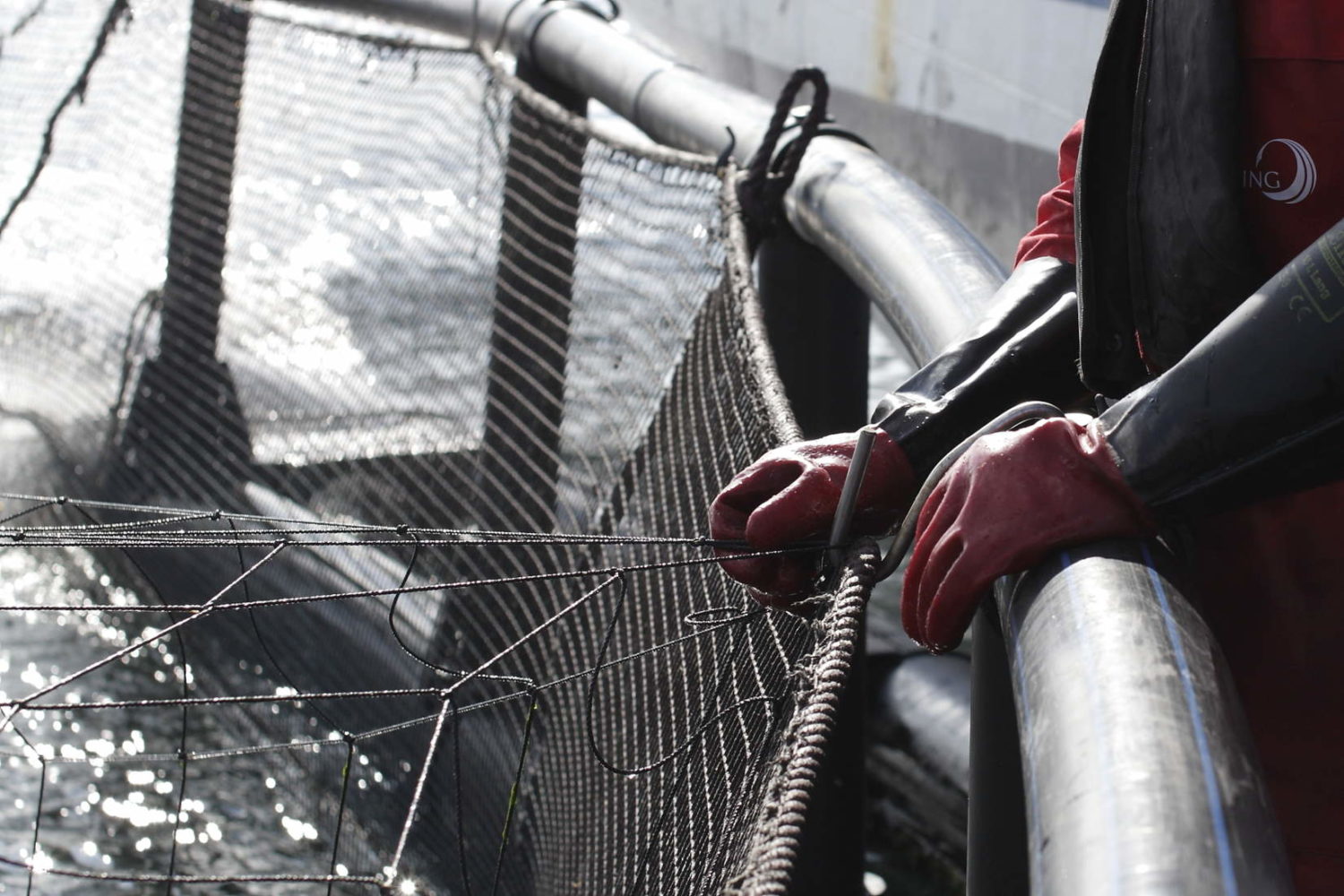
In February, the BC Salmon Farmers released an economic analysis that found 4,700 jobs could be lost in B.C. coastal communities, including Courtenay, Comox, Port Hardy, Ucluelet, Port Alberni and Metro Vancouver, if the 79 licences were not renewed.
Some First Nations on Vancouver Island also called for the licences to be renewed. In a March press release, a group called the Coalition of First Nations for Finfish Stewardship said salmon farming “injects money into our communities, creates meaningful employment for our members, provides opportunities for First Nations-owned business to supply the sector, and funds projects that contribute to the wellness of our people and wild salmon.”
“Re-issuance will give us time to further engage with our members on the positive transition and diversification of the salmon-farming sector,” the release said.
“This process should be led by First Nation governance, economic development, and environmental stewardship resulting in a tangible expression of reconciliation,” it said.
Updated on June 23, 2022 at 12:45 p.m. PT: This story has been updated to include comments from Fisheries and Oceans Minister Joyce Murray and additional reaction to the government’s announcement on open-net salmon farm licences.
Get the inside scoop on The Narwhal’s environment and climate reporting by signing up for our free newsletter. On a warm September evening nearly 15...
Continue reading
10 billion litres of sewage are dumped into Winnipeg’s lakes and rivers each year. Some...

Court sides with Xatśūll First Nation, temporarily halting Mount Polley mine waste expansion

Break out the champagne: Emma’s storied life and leadership in journalism has earned her the...
